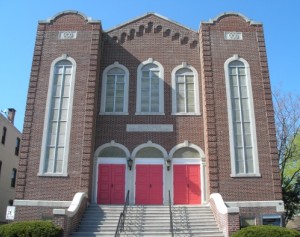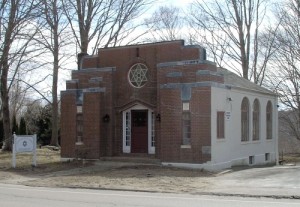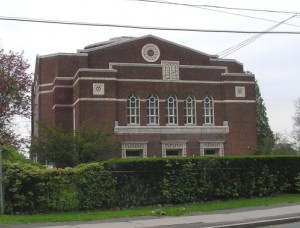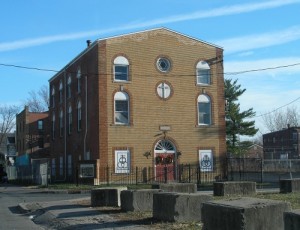Calling Jewish Activists: Synagogues Need You and You Need Them
Too often, Jewish activists have not found a home in synagogues. They choose to engage in their efforts for social and economic justice outside the congregational setting, if they belong to one at all. Conversely, many synagogues have not been able to attract the interest, involvement, and activism of a significant portion of the American Jewish community. The single biggest movement of Judaism is the “unaffiliated.”
And yet, a significant element of the emerging Jewish social justice movement is coming from synagogues, as Jewish congregations reinvent themselves to become centers of ritual, learning and action that are relevant in the lives of a generation of Jews (and some non-Jews) seeking deeper meaning and connection. We see evidence of this trend in the growth of Synagogue 3000, STAR, the ECE project, and the participation of rabbis, synagogue professionals, and lay leaders in various efforts to become better leaders. In addition, new congregations and minyanim are being created across the United States by a generation who are taking ownership over their Judaism. They are not waiting to be served passively. As a result, synagogues are developing new, innovative ritual practices alive with spirit and music, as well as approaches to religious education that engage adults and children.
Congregation-based community organizing (CBCO) is an approach to synagogue life that has two simultaneous goals. The first is to build power for social and economic justice. The second is to transform the synagogue into a congregation in which members are more deeply connected to one another. In this article, I will make the case that CBCO is a critical strategy for the Jewish community to become an effective force for justice on a much broader scale. I will also argue that Jewish activists need synagogues to realize their goals for the Jewish community. Finally, I believe the transformative nature of CBCO has the potential to shape synagogues into the kind of places activists want to be. In other words, I believe activists need synagogues and synagogues need activists.
One Becoming Many
Alec Harris was an activist. And he was alone. He was moved by his rabbi’s sermon after the shooting in a Seattle Jewish community center to take on the issue of gun control. Alec lives in Chicago, and began writing letters to legislators. He passed out flyers. He tried to organize meetings and educational programs at his congregation. After a while, nothing much changed, and Alec was feeling frustrated and alone.
During that time, Alec’s synagogue, Chicago Sinai Congregation, was becoming involved in United Power for Action and Justice in Chicago. United Power is an affiliate of the Industrial Areas Foundation (IAF), founded by the godfather of community organizing, Sol Alinsky. The IAF organizers who oversee United Power are the same people who have trained a generation of community organizers, including Barack Obama.
United Power is not an organization of activists. Rather, it is a collective of institutions. It is made of up churches, synagogues, mosques, unions, health centers, and other “mediating” institutions. They are called “mediating” because they represent the civic sector and mediate the effects of the government and business sectors in people’s lives. This is an important element of Alec’s story because he discovered the power to make change in the collective resources of institutions working together.
Alec and other members of his synagogue joined with leaders of other religious and secular Chicago area institutions who were fed up with gun violence. They formed research teams and discovered that most of the guns flowing into their community were being supplied by a single gun dealer. They joined together, across lines of race, class and faith, and through a coordinated campaign of public assemblies and press statements, applied pressure and shut down the dealer.
Through the successful campaign to shut down the Illinois gun dealer, Alec Harris was transformed from an activist to an organizer. As an activist, he sent out letters and passed out flyers. Yet he was alone, and had little power to be effective. Through United Power, he and the members of his congregation found the collective leverage of tens of thousands of people united in common cause, with the weight and resources of their various institutions acting together. The story of Alec and his synagogue continues. Working with his rabbis, a leadership team of diverse members of the congregation, and an organizer with United Power, Sinai launched a campaign called “Face-to-Face”. Echoing the Torah’s depiction of the encounter, panim-el-panim, between God and Moses, this was a systematic effort to bring members of this diverse, urban–suburban congregation into sacred conversation. The leadership team conducted planning meetings and training sessions, and hundreds of members literally met and spoke one-on-one, or face-to-face. Lasting for about an hour a piece, these conversations enabled members who may have previously sat anonymously in services or passed each other on the religious school drop-off line to actually know each other’s concerns, passions, and interests. People were asked to share their visions for a more just community, asking one another what injustices they witness that “keep them up at night.” They told stories to each other, so that their values and concerns became concrete and compelling, beyond abstract assertions.
Throughout the process, the leadership team as able to discern concerns common to many members of the congregation. Folks were losing sleep over the rapidly disintegrating condition of the environment. Others were outraged at a broken healthcare system, in which people were suffering with no access to quality affordable care. Most important, members bonded with one another as they heard each other’s stories. The sharing of the stories became a sacred act that brought members into relationship, face-to-face.
Recently, members of Chicago Sinai joined with thousands of other members of United Power—Muslims, Christians, and Jews, folks of various races and economic backgrounds from urban and suburban Chicago—and successfully pushed a bill through the Illinois legislature bringing health insurance access to thousands more people. Such a political victory could never be achieved by a lone activist; rather, it took the collective institutional power of folks acting together to win.
The experience of Alec Harris and Chicago Sinai Congregation is far from unique. For seven decades, churches have successfully built local power and made significant changes in their communities through broad-based or congregation-based community organizing, initially through IAF projects, and more recently through four national networks. The first living wage campaign in the country (Baltimore), the first Nehemiah housing effort (which led to the construction of tens of thousands of affordable units in New York and other areas), and the remarkable transformation of formerly destitute Latino areas in the Southwestern U.S. were all led by churches organizing together through IAF affiliates.
Institutional Change
Over the last decade, synagogues have become a potent force for social and economic justice by joining churches and sometimes mosques in local, broad-based organizations. The key assemblies in the successful campaigns to win universal health care in San Fransisco and health care reform in Massachusetts were held at Sha’ar Zahav and Temple Israel, respectively, both Reform Jewish congregations. Jewish congregations have been at the forefront of successful campaigns for affordable housing, public school funding, health care access, and other issues from Florida to California, in Okinosha, WI, and El Paso, TX.
The trend of Jewish involvement in CBCO is only increasing. The Union for Reform Judaism launched Just Congregations as a strategy to exponentially grow the number and efficacy of Reform synagogues who organize in a broad-based context. The Jewish Funds for Justice and the Nathan Cummings Foundation were the early supporters of this work, and their efforts have successfully engaged every major Jewish denomination in CBCO. In addition, rabbis and Jewish professionals are being trained in CBCO on nine Jewish seminary campuses across the United States.
The reason for and result of this trend grows from the recognition that the Jewish community can have an enormous impact on economic and social policy in the United States by organizing our most significant base: the millions of people who attend synagogues. Alinsky’s belief, confirmed by decades of experience, is that organized institutions acting together can have tremendous power. Alec Harris’s experience, moving from activist to organizer, has the potential to be a metaphor for the entire Jewish (if not broader religious) community; we can organize our institutions to become the potent force for social and economic justice in America.
For this reason I assert that activists need synagogues. To build the kind of power needed to win universal health care, save our disintegrating environment, and act effectively on a variety of issues reflecting our deepest Jewish values, we will need to organize and use the power of our congregations. I also believe synagogues need activists (who understand organizing). By its very nature, CBCO is a transformative process. Before Face-to-Face, many members of Chicago Sinai were anonymous to one another. With great exceptions, the “program” of the congregation was less a reflection of the stories and interests of its members than the agenda of the staff and a handful of leaders who lovingly ran the institution. Through Face-to-Face, Sinai became less an institution of programs, and more of community of relationships. As a result, the “program” of the synagogue became driven by the aspirations, passions, and interests of the members. Not only did they come to know one another as they began to act together on their common concerns, but the activities of the synagogue became an outgrowth of their collective vision.
I believe the main reason people are alienated or unaffiliated from congregational life is that synagogues have often seen themselves as institutions providing programs, rather than communities fostering relationships. In a congregation conducting relationship-building campaigns of one-on-one meetings, Jewish activists will discover a community that cares about each individual’s story. Such a congregation invites each person asking: what do you care about? What mode of prayer would speak to you? How could we study and learn in a way that would engage you? Most important, these questions are not asked in the context of a marketing project or focus-group: in a culture of organizing, community members are asked this question with the goal of engaging them as leaders in the community they envision for themselves and their families.
Imagine what it would look like if congregations were able to harness the passions, energy, and commitments of the Jewish social justice activists who are leading the American Jewish campaign for a more just world? Imagine what prayer and study in synagogues would be like if they reflected the collective vision of this talented pool of leaders, working with and among others dedicated to a truly relational community? Truly, there are examples of such congregations across the country (B’nai Jeshurun in New York, Ikar in Los Angeles, and Temple Israel in Boston all come to mind). Yet several million Jews congregate in thousands of synagogues across the country that still operate as programmatic institutions rather than relational communities. And many more Jews do not join synagogues at all.
I believe the time has come for synagogues across the denominational spectrum to engage deeply in the transformative, relational work of congregation-based community organizing. Synagogues need to do this work to bring in the many unaffiliated Jews who have not found a home inside their doors, whose passion is desperately needed at this critical hour. Conversely, I believe activists who yearn to bring the prophetic call for justice to bear in our world need to join synagogues. As part of a congregation, they can marshall the resources of collective power to bring about their visions for social and economic justice.
Indeed, activists and synagogues need one another.
![[the current issue of ZEEK]](../../image/2/100/0/5/uploads/leftistethicistgraphic-52842c6a.png)
- 5000 Pages of Zeek
- Founded in 2001, Zeek was the first Jewish online magazine, and we have over 5000 pages online to prove it, all available free of charge. Read more in the Archive.
More articles by
Rabbi Jonah Dov Pesner
More articles in
Faith and Practice
- To-Do List for the Social Justice Movement: Cultivate Compassion, Emphasize Connections & Mourn Losses (Don’t Just Celebrate Triumphs)
- Inside the Looking Glass: Writing My Way Through Two Very Different Jewish Journeys
- What Is Mine? Finding Humbleness, Not Entitlement, in Shmita
- Engaging With the Days of Awe: A Personal Writing Ritual in Five Questions
- The Internet Confessional Goes to the Goats





